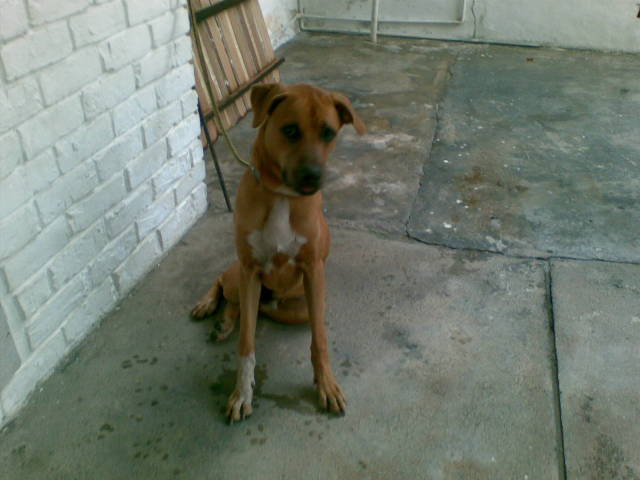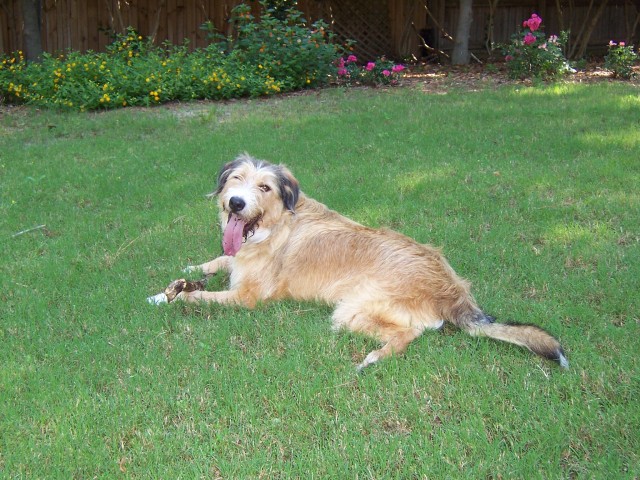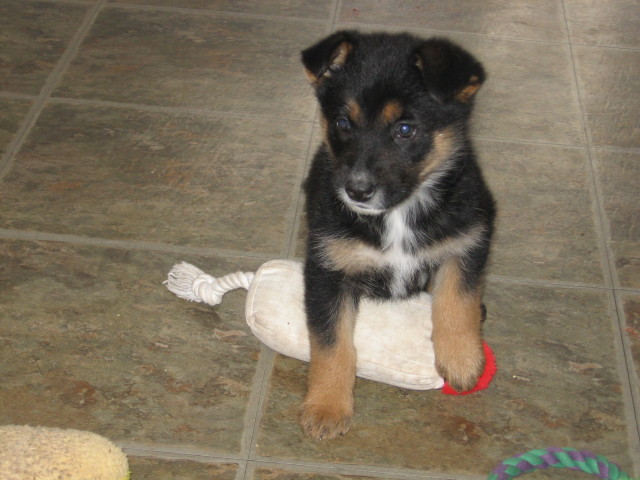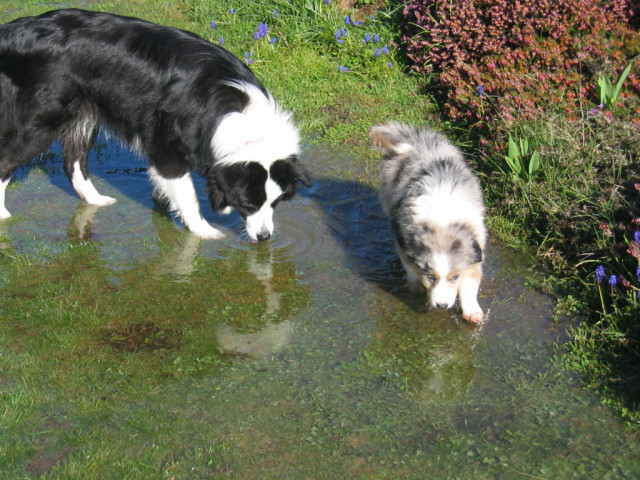QuestionWe just adopted a 12 years old Border Collie / Australian Cattle Dog mix about 2 months ago.... he is very sweet and affectionate towards my husband and me. At night he sleeps with us and our Blue Heeler in the bed room (on the floor). However, he gets extremely aggressive when my husband enters the bed room (usually 1-2 hours after me and the dogs) he growls excessively, curls his lips, neck hair standing straight up - he looks like he's ready to attack. Even when my husband talks to him or turns on the light he continues his aggressive behavior. I usually have to 'calm him down' before my husband can come to bed. I usually talk to him in a strict voice to make sure he doesnt think I encourage or reward that behavior. Once he calms down I pet him.
I dont know if he doesnt recognize him (he is pretty old after all) or if he protects me, or both... I thought with time he'd get used to him entering the room in the middle of the night, but it didnt get any better.
Also, in the evening when he relaxes and my husband gets down to hug/pet him he growls at him too. Not as deep and threatening as at night, but still... Does he just doesnt like my husband, or is he maybe in pain? The vet said he had beginnings of arthritis, but if so why doesnt he ever growl at me when I do the same?
How can I break this habit? Or is he too old? Is he just protective of me or confused?
AnswerFor the next two weeks do the following and then REPORT BACK TO ME USING THE FOLLOWUP FEATURE (which gives me the opportunity to see your original question and my answer):
1. Confine the dog to the kitchen until your husband is ready to come to bed. Have your husband leash the dog and then stand quietly with him until the dog is perfectly calm and quiet. Wait for the dog to look at your husband (this might take time at first, the dog will have to think through this event and then look at your husband for what happens next). Providing the dog is perfectly calm and waiting for 'what comes next' any attention (directly looking at your husband) should be rewarded (tiny tidbit of something good). IF the dog is growling, your husband must stand there and do nothing, break eye contact, wait for the dog to stop, then circle the dog (tight circle), wait for dog to VISIBLY CALM and demonstrate a change of emotional state (sit, sniff the floor), then wait for dog to give attention (as described above), reward. Then husband brings dog to bedroom: HUSBAND MUST WALK THROUGH DOOR FIRST, using leash to control dog's movement forward, without saying anything. Husband must then say "okay" and allow dog to cross threshold into bedroom. Remove the leash ONLY after husband has gotten into bed. IF during any of this the dog bares teeth, growls with intent, repost immediately. YOU must teach this dog to "wait" at doorway to bedroom (use house tab: leash with handle cut off) and "okay" to enter bedroom, so you are effectively doing boundary training as you see below:
http://www.youtube.com/watch?v=NCuY9uX7ods&feature=related
This dog should NOT be allowed in that bedroom until husband brings him in; while doing boundary training, husband should already be IN the bedroom but should do nothing except observe.
2. Husband should be in charge of feeding this dog, twice daily. "Hugs" are restraint to a dog; if this dog has an acquired fear response toward men (and it appears this is the problem), any FREE show of affection and attention from your husband confuses the dog. This is a serious guarding breed and is NOT a casual companion. This breed must know who is "in charge" or the dog will take charge, himself. In order to be "in charge", your husband needs to establish psychological status in this social hierarchy and that means he is the source of all food, he is the source of all attention, and the dog must "earn" being fed AND getting attention by "sitting" FIRST, every time, for the next month.
A growl is a bite waiting to happen. This doesn't sound like cognitive failure, it is a fear response to something we can't know. If the dog persists in growling, or if any part of the above instructions escalates the dog's defense aggression, you will need a certified applied animal behaviorist (NOT a dog trainer). No guaranty the dog won't escalate in aggression can be offered by me or anyone else because I CAN'T SEE ANYTHING FROM HERE. To find a behaviorist, try the following sites:
http://certifiedanimalbehaviorist.com/page6.html
http://www.arkanimals.com/ark/dg_expert_referrals.html
http://www.animalbehavior.org/ABSAppliedBehavior/caab-directory
You can evaluate the level of threat this dog poses below BUT I STRONGLY URGE YOU not to treat this without professional help if the instructions I give FAIL or do NOT HELP:
http://www.k9aggression.com/Aggression-Treatment/prognosis.html

 uncontrollable beagle
Question
max
My beagle is a year and a half. Ive had hi
uncontrollable beagle
Question
max
My beagle is a year and a half. Ive had hi
 dogs behaviour
QuestionMy 8 months old Dusto
QUESTION: My puppy
dogs behaviour
QuestionMy 8 months old Dusto
QUESTION: My puppy
 anxious dog
Question
Louie
Hi, We adopted a 2 year old male A
anxious dog
Question
Louie
Hi, We adopted a 2 year old male A
 puppy problems
QuestionQUESTION: I am the proud owner of 2 german shep
puppy problems
QuestionQUESTION: I am the proud owner of 2 german shep
 Dog in Heat?
QuestionLily and Jorge
QUESTION: Hello,
We have
Dog in Heat?
QuestionLily and Jorge
QUESTION: Hello,
We have